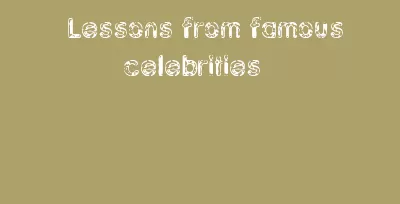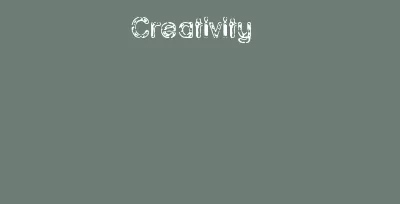profile/2221IMG_20201110_182044_954.jpg
Lilchase
Lessons From Famous Celebrities
Lessons on Creativity from Famous Creators
The 15-Minute Routine Anthony Trollope Used to Write 40+ Books: Beginning with his first novel in 1847, Anthony Trollope wrote at an incredible pace. Over the next 38 years, he published 47 novels, 18 works of non-fiction, 12 short stories, 2 plays, and an assortment of articles and letters. Let’s break down why Trollope’s simple strategy allowed the author to be so productive and how we can use it in our own lives.The Weird Strategy Dr. Seuss Used to Create His Greatest Work: In 1960, the founder of Random House publishing firm challenged Dr. Seuss to write an entertaining children’s book using only 50 different words. The result was a little book called Green Eggs and Ham. Here’s what we can learn from Dr. Seuss…How Creative Geniuses Come Up With Great Ideas: Best-selling author Markus Zusak estimated that he rewrote the first part of his popular book “The Book Thief†150 to 200 times. His work ethic and dedication tell us something crucial about how creative geniuses come up with great ideas.profile/2221IMG_20201110_182044_954.jpg
Lilchase
Creativity
What is Creativity?
Let’s define creativity.
The creative process is the act of making new connections between old ideas or recognizing relationships between concepts. Creative thinking is not about generating something new from a blank slate, but rather about taking what is already present and combining those bits and pieces in a way that has not been done previously.
While being creative isn’t easy, nearly all great ideas follow a similar creative process. In 1940, an advertising executive named James Webb Young published a short guide titled,
A Technique for Producing Ideas.
Young believed the process of creative connection always occurred in five steps.
The Creative Process
Gather new material. At first, you learn. During this stage you focus on 1) learning specific material directly related to your task and 2) learning general material by becoming fascinated with a wide range of concepts.Thoroughly work over the materials in your mind. During this stage, you examine what you have learned by looking at the facts from different angles and experimenting with fitting various ideas together.Step away from the problem. Next, you put the problem completely out of your mind and go do something else that excites you and energizes you.Let your idea return to you. At some point, but only after you have stopped thinking about it, your idea will come back to you with a flash of insight and renewed energy.Shape and develop your idea based on feedback. For any idea to succeed, you must release it out into the world, submit it to criticism, and adapt it as needed. 


